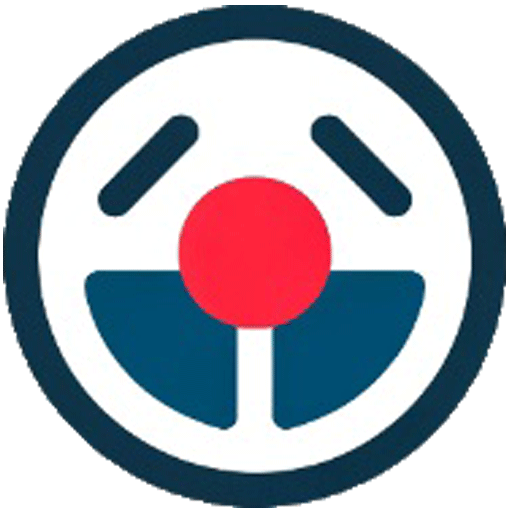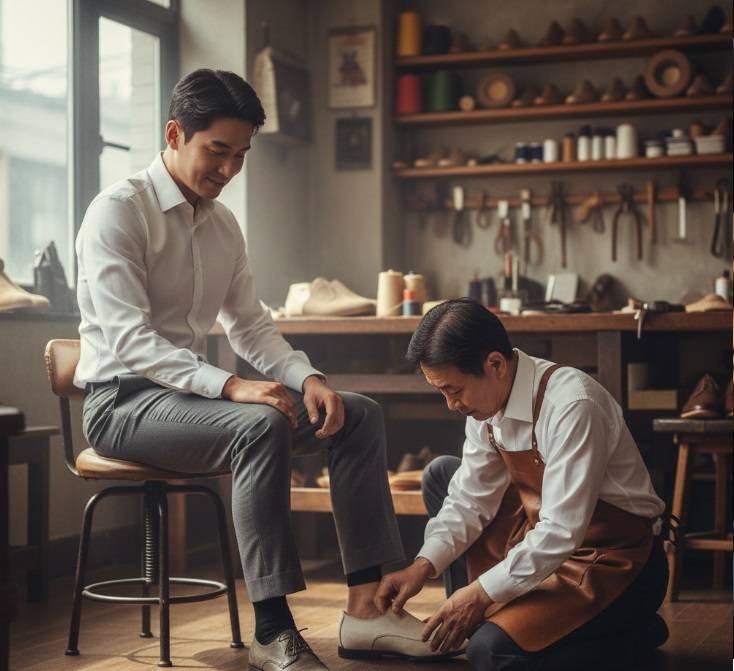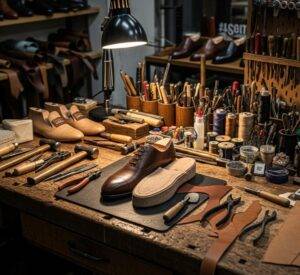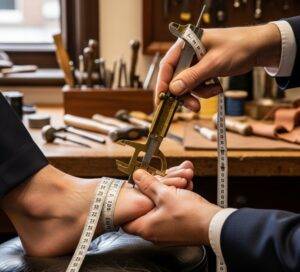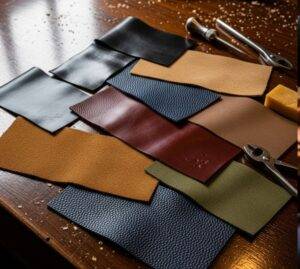For the discerning individual, a shoe is not merely an accessory; it is the foundation upon which personal style is built. While the world’s luxury capitals offer no shortage of off-the-rack options, a growing number of connoisseurs are turning to Seoul for a more intimate and rewarding experience. In the heart of the city lies Seongsu-dong, a district where the scent of leather and wax still hangs in the air, home to a community of world-class artisans. This guide is your definitive introduction to the world of Seongsu-dong custom shoe makers, a journey into the heart of bespoke footwear South Korea has to offer. We will demystify the process, from initial consultation to final polish, empowering you to commission a pair of shoes that is not just made for you, but is a true extension of you.
A Guide to the Seongsu Handmade Shoe Street
Seongsu-dong’s legacy as the epicenter of Seoul’s shoemaking industry dates back decades. Once a gritty landscape of factories, it has gracefully evolved into a vibrant hub where industrial heritage meets modern artistry. The area known as Seongsu Handmade Shoe Street (성수동 수제화거리) is not a single, polished boulevard but a network of small, often unassuming workshops nestled in quiet alleys.
Here, generations of skill are passed down in workshops where masters labor over every detail. Visiting the street is an experience in itself. You will see artisans meticulously cutting patterns, stitching welts, and shaping leather over wooden lasts. It is a tangible reminder that true luxury lies not in a logo, but in the time, skill, and passion invested by a human hand.
Finding Your Artisan: Profiles of Seongsu-dong Custom Shoe Makers
Your journey begins with finding the right craftsperson whose style aligns with your own. While every workshop is unique, visiting a few will give you a sense of the distinct philosophies at play. Here are a few examples to guide your search.
The Classicist: Yu Hong Sik Bespoke Shoes (유홍식 수제화)
Designated as Seoul’s Master Shoemaker No. 1, Yu Hong-sik is a living legend in Seongsu-dong. His workshop is a temple to tradition, specializing in the timeless silhouettes of men’s dress shoes. Known for crafting footwear for former President Moon Jae-in, Master Yu focuses on impeccable fit and flawless finishing using robust, traditional construction methods.
- Ideal For: The business professional or connoisseur seeking the pinnacle of classic Korean craftsmanship in an Oxford or Derby that will last for decades.
- Location: 2F, 97 Achasan-ro, Seongdong-gu, Seoul (Google Maps)
The Modernist: Amble (앰블)
For those who respect tradition but aren’t bound by it, workshops like Amble offer a contemporary perspective. They blend classic forms like loafers and wingtips with modern sensibilities, using unique leather combinations and sleeker profiles. Their designs feel fresh and relevant, perfect for the style-conscious individual.
- Ideal For: The creative professional or style enthusiast looking for a unique statement piece that showcases personality alongside a deep appreciation for quality.
- Location: 3F, 26 Achasan-ro 11-gil, Seongdong-gu, Seoul (Google Maps)
The Specialist: JS Shoes Design Lab (JS슈즈디자인연구소)
True bespoke service shines when addressing unique needs. Helmed by Master Jeon Tae-soo, who once crafted shoes for the First Lady, this workshop has a reputation for exceptional comfort. Known for creating shoes for performers and dancers, their expertise lies in understanding foot anatomy to provide unparalleled support and balance without sacrificing elegance.
- Ideal For: Anyone with non-standard sizing, specific comfort requirements, or who has struggled to find a perfect off-the-rack fit.
- Location: 2F, 72-4 Seongdeokjeong-gil, Seongdong-gu, Seoul (Google Maps)
How to Order Custom Shoes in Seoul: The Bespoke Process
Commissioning a pair of bespoke shoes is a collaborative process, a dialogue between client and maker. Here is the step-by-step journey you can expect.
Step 1: The Initial Consultation & Measurement
Your first visit will be an in-depth conversation. You will discuss your lifestyle, needs, and aesthetic preferences. The artisan will then take meticulous measurements of your feet—not just length and width, but also arch height, instep volume, and any unique characteristics. This is the cornerstone of the entire process.
Step 2: Design & Material Selection
This is where your vision takes shape. You will choose the shoe style, the shape of the toe, and the type of sole. You will be presented with a stunning array of leather swatches, from French calfskin to Italian suede and American shell cordovan. You will select the color, the finish, and even the color of the stitching and lining.
Step 3: The Trial Fitting
After several weeks, you will be called back for a trial fitting. The artisan will have created a “test” shoe, or fitting shoe, based on your custom last. This is the most critical step to perfect the fit. You will try it on, walk around, and provide detailed feedback. The maker will note any areas of pressure or looseness, making precise adjustments to the last before cutting into the final, expensive leather.
Step 4: The Final Construction
With the fit perfected, the master begins the final construction. The chosen leather is carefully cut, stitched, and stretched over your personalized last. Whether using a Goodyear welt for durability and water resistance or a Blake stitch for a sleeker, more flexible feel, this stage is a testament to painstaking precision.
Step 5: Collection & Final Polish
Your finished shoes are presented to you. They will have been polished, conditioned, and inspected for any imperfections. The final fit should be snug but comfortable, with the leather ready to mold perfectly to your feet over time. You are not just collecting a product; you are receiving a piece of functional art.
Understanding the Price of Handmade Leather Shoes in Seoul
An investment in bespoke footwear is an investment in unparalleled quality and longevity. The price is a direct reflection of the master’s time, the quality of materials, and the complexity of the construction.
- Key Cost Factors:
- Leather: Standard high-grade calfskin is the baseline. Premium options like shell cordovan or exotic leathers (e.g., alligator, ostrich) will significantly increase the price.
- Construction Method: A hand-welted Goodyear construction is more labor-intensive and thus more expensive than a Blake-stitched or cemented shoe.
- Design Complexity: A simple derby is less complex to craft than a brogued wingtip with intricate detailing.
- Typical Price Range: For a pair of classic dress shoes in high-quality calfskin, you should expect a starting price of around $700,000 KRW (approx. $550 USD). The price can easily rise to $1,500,000 KRW (approx. $1,200 USD) or more for premium materials and complex designs.
- Expected Timeline: From the initial consultation to final collection, the entire process typically takes between 4 to 8 weeks. This can vary depending on the workshop’s backlog and the number of fittings required.
Caring For Your Investment: Aftercare Essentials
Your relationship with your shoes doesn’t end when you leave the workshop. Proper care will ensure they last for decades, developing a rich patina and character over time.
- Cedar Shoe Trees: An absolute non-negotiable. They absorb moisture, prevent creasing, and maintain the shoe’s shape. [Affiliate Link: Recommended Cedar Shoe Trees]
- Quality Leather Conditioner: Leather is a skin; it needs moisture. Apply a high-quality conditioner every few months to keep it from drying out and cracking. [Affiliate Link: Premium Leather Conditioner]
- Cream Polish: Use a cream-based polish that matches your shoe color. It nourishes the leather while restoring color and luster, unlike wax polishes which can dry the leather over time. [Affiliate Link: Saphir Médaille d’Or Cream Polish]
- Horsehair Brush: Use a large horsehair brush for daily cleaning to remove dust and a smaller one for applying polish.
Conclusion: An Investment in Yourself
In a world of mass production, choosing to commission a pair of shoes from the Seongsu-dong custom shoe makers is a deliberate act of valuing craftsmanship, quality, and individuality. It is an investment not just in a superior product that will fit you perfectly and last a lifetime, but in the preservation of an art form. It is a deeply personal and rewarding experience. With this guide in hand, you are now prepared to take the first step with confidence, embarking on a journey to create something truly and uniquely your own.
Frequently Asked Questions (FAQ)
How long does the entire custom shoe-making process take in Seongsu?
The process, from your first measurement to collecting the finished shoes, typically takes between 4 and 8 weeks. This timeframe allows for the initial last-making, a crucial trial fitting, and the meticulous final construction of the shoe.
Do I need to speak fluent Korean to order from these workshops?
While knowing some basic Korean is always appreciated, it is not strictly necessary. Many artisans in Seongsu-dong are accustomed to working with international clients. Using a translation app like Papago on your phone is highly effective for detailed conversations. For a more seamless experience, you can hire a short-term interpreter for your initial consultation and trial fitting.
What is the typical starting price for a pair of handmade leather shoes in Seoul?
You can expect the starting price for a quality pair of bespoke shoes made from calfskin to be around $700,000 KRW (approximately $550 USD). Prices will increase based on the choice of leather, construction method, and complexity of the design.
Is a deposit required when placing an order?
Yes, a deposit is standard practice. You will typically be asked to pay a deposit of 50% of the total cost after your initial consultation and design selection. The remaining balance is due upon collection of the finished shoes.
Hi, I’m [jeybee]. As a long-time resident of Seoul, I’m passionate about uncovering the authentic, everyday magic of Korea. This blog is my way of sharing my favorite spots, tips, and cultural insights with you, beyond the usual tourist traps.
